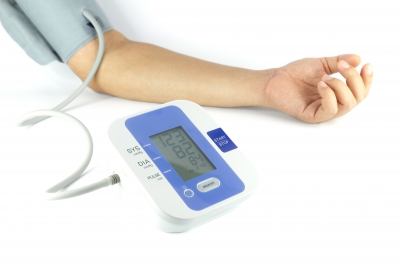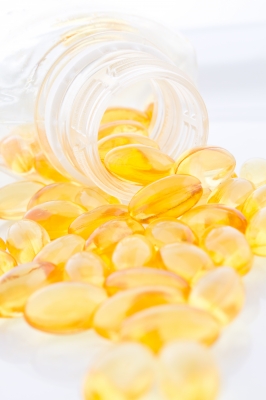How to Reduce Stress When You Don’t Have Time for Activity
 When you are stressed your body releases stress hormones to prepare the body for “fight of flight”. This hormone release causes heart rate to increase and blood vessels to constrict. The combination leads to elevated blood pressure. With short term stress, this is a temporary rise in blood pressure that resolves itself once the stressful situation is resolved.
When you are stressed your body releases stress hormones to prepare the body for “fight of flight”. This hormone release causes heart rate to increase and blood vessels to constrict. The combination leads to elevated blood pressure. With short term stress, this is a temporary rise in blood pressure that resolves itself once the stressful situation is resolved.
But what about when you live with chronic stress?
There is no direct scientific link between chronic stress and high blood pressure. However, stress is connected to many behaviors directly tied to high blood pressure and heart disease, such as consuming alcohol, lack of sleep, and overeating.
Physical activity for stress relief… but what if you don’t have time?
Being physically active is a proven method you can use to reduce stress levels. Activity triggers the brain to release “feel-good” chemicals to ease stress. Exercising and being active are also proven ways to lower blood pressure.
However, time and location may not always be conducive to employ activity to lower stress levels. Here are ten alternate techniques for reducing stress.
- Eat a healthy diet
- Avoid alcohol
Include foods rich in vitamins and minerals to counteract stress, such as fresh vegetables, fresh fruits, fish, and yogurt.
This potential short term “fix” to alleviate stress can quickly turn into a long term problem.
Continue reading
An Alternative Method to Help Lower Blood Pressure
Article provided by guest contributor, Diane Isaac.

With high blood pressure being a major problem for people across the world, some readily available alternatives to lower blood pressure are often overlooked. This article will look at one particular method, which can help the overall wellbeing of individuals while also aiding to bring down their blood pressure.
While regular exercise without doubt helps lower blood pressure, using a sauna frequently has also been proven to aid in reducing blood pressure as well as reducing the chances of fatal cardiac events.
A study by Jari A. Laukkanen, M.D., Ph.D., working out of the University of Eastern Finland, Kuopio found that there’s an “association between sauna bathing and the risk of SCD, fatal coronary heart disease (CHD), fatal CVD and all-cause mortality in a group of 2,315 middle-aged men (42 to 60 years old) from eastern Finland.” The study concluded from its results that the men that visited saunas three times a week had a longer lifespan that those who didn’t, and had less cardiac problems later in life.
Heart Health: Demystifying Blood Pressure

Infographic courtesy of Arxan Technologies.
Aggressively lower blood pressure to reduce heart disease risk 33%

One out of three U.S. adults, 33 percent, have high blood pressure. This equals around 70 million Americans.
About 65 percent over the age of 60 have high blood pressure.
High blood pressure increases your risk for heart disease and stroke. These are two leading causes of death in the U.S.
What is high blood pressure?
High blood pressure is defined as having a blood pressure at or above 140/90 mm Hg.
140 (top number) is your systolic reading.
90 (bottom number) is your diastolic reading.
Current guidelines for treating high blood pressure are to lower systolic blood pressure to below 140 mg Hg and below 130 mm Hg for adults with kidney disease or diabetes. The most commonly prescribed treatment is blood pressure medication, which can be effective, but includes potential side effects.
Would the benefits of lower blood pressure guidelines outweigh the cons associated with more aggressive treatment and higher medication dosage?
The Systolic Blood Pressure Intervention Trial (SPRINT) began in the fall of 2009, including 9300 participants 50 years of age or older. It is worth noting 28% of participants were over the age of 75. SPRINT is the first study to investigate the impact of maintaining a systolic blood pressure at a lower level than current guidelines and the impact on cardiovascular and kidney disease.
SPRINT investigators divided participants into two groups.
What supplements can improve heart health and prehypertension?
 Dr. Britt Burton-Freeman is Director, Center for Nutrition Research, Institute for Food Safety and Health, Illinois Institute of Technology; Associate Research Nutritionist, UC Davis. Her research involves obesity and vascular disease inflammatory and oxidative stress responses. Her research approach includes human and basic science methodology.
Dr. Britt Burton-Freeman is Director, Center for Nutrition Research, Institute for Food Safety and Health, Illinois Institute of Technology; Associate Research Nutritionist, UC Davis. Her research involves obesity and vascular disease inflammatory and oxidative stress responses. Her research approach includes human and basic science methodology.
Dr. Burton-Freeman has shared with us information on supplements and their effectiveness for improving heart health.
Fish oil omega 3 fatty acids
Studies investigating fish oil omega-3 fatty acid supplementation have shown improvements in CVD risk factor reduction. Specifically, fish oil omega-3 fatty acids aid in lowering triglycerides in the blood and help raise HDL. Fish oil omega-3 fatty acids also help to reduce inflammation and are also involved in platelet function, reducing blood clotting time. Hence, too much fish oil can increase the risk of bleeding and hemorrhagic strokes. Elevated blood pressure is another risk factor for CVD. High doses of omega 3 fatty acids have been shown to lower blood pressure in people with hypertension. Consuming > 3 g of fish oil omega 3 fatty acids is advised only under the advice and monitoring of a physician.
Lycopene
Continue reading
Eating Red Meat Increases Heart Disease AND Cancer Risk

Red meat and processed meats are connected to cancer according to the World Health Organization (WHO).
Researchers noted in 2014 studies indicating a high consumption of red meat or processed meat to slightly increase cancer risk. Therefore, the International Agency for Research on Cancer (IARC, a part of WHO) decided to evaluate red meat and processed meat to provide solid scientific evidence regarding cancer risk and red meat/processed meat consumption.
Processed meats: carcinogenic to humans
Processed meats are meat products produced by salting, fermenting, curing, smoking, or other technique to enhance preservation and flavor. Some examples of processed meat include hot dogs, sausages, ham, beef jerky, salami, corned beef, pepperoni, spam, and bologna.
The IARC classified processed meats as Group 1, carcinogenic to humans. This means there is enough evidence to support processed meat as cancer causing.
Tobacco smoking and asbestos are also classified as Group 1. However, the IARC is careful to clarify this does not mean processed meat is equally as dangerous to your health as tobacco smoking and asbestos. The group classifications only indicate strength of scientific evidence, not degree of risk.
Red meats: probably carcinogenic to humans
Red meat includes beef, pork, veal, and lamb. The IARC classified red meat as Group 2A, probably carcinogenic to humans. Red meat studies were more limited than processed meat studies, but did show an association between red meat consumption and colorectal cancer. However, current studies cannot rule out other potential explanations for the increased cancer risk. Therefore, classified as Group 2A, probably carcinogenic. In addition to colorectal cancer, an association was seen between red meat consumption and stomach cancer…but again, no conclusive evidence.
High temperature preparation and carcinogens



